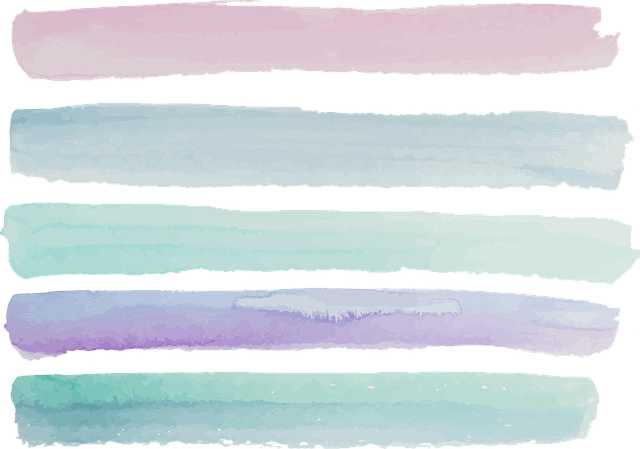Table of Contents
- Exploring the Beauty of Natural Landscapes in Art
- Techniques for Capturing the Essence of a Scene
- Choosing the Right Color Palette for Landscape Paintings
- Inspiration from Famous Landscape Artists and Their Works
- Q&A
- Insights and Conclusions


Exploring the Beauty of Natural Landscapes in Art
Natural landscapes have inspired generations of artists, fostering a deep connection between visual art and the beauty of the world around us. From the gentle curves of rolling hills to the dramatic peaks of towering mountains, these scenes are not just backdrops; they are the essence of emotion and atmosphere in paintings. Various elements within these landscapes evoke feelings of peace, adventure, and even nostalgia, urging the viewer to immerse themselves in the artist’s perspective.
Artists often employ a variety of techniques to capture the essence of nature’s splendor. Color plays a vital role in expressing the mood of a landscape. For example:
- Warm hues, such as yellows and oranges, often depict sunsets, creating feelings of warmth and tranquility.
- Cool tones like blues and greens can evoke a sense of calm or isolation, resembling serene lakes or dense forests.
- Contrasting colors might be used to highlight the dynamism of a scene, drawing attention to specific elements like stormy skies or vibrant flowers.
Composition is another crucial aspect. The arrangement of elements, such as the foreground, middle ground, and background, can dramatically influence the viewer’s experience. Artists utilize techniques such as:
- Leading lines to guide the viewer’s eye through the painting, often directing them toward a focal point.
- Framing with trees or mountains can create depth and intimacy in a work.
- Layering to showcase distance and perspective, making the scene feel more expansive.
| Aspect | Effect |
|---|---|
| Color Use | Sets the emotional tone |
| Composition | Guides viewer’s focus |
| Texture | Enhances realism |
The play of light across landscapes is another fascinating element artists explore. By utilizing different brush strokes and techniques, they can convey the sparkle of sunlight over water or the soft shadows cast by clouds. Such interactions not only add ambiance but also breathe life into the canvas, transforming it into a window to nature. Each stroke captures fleeting moments, inviting viewers to pause and reflect on the beauty that often gets lost in the hustle of everyday life.


Techniques for Capturing the Essence of a Scene
Capturing the essence of a scene in landscape paintings is an intricate dance of observation and imagination. To initiate this process, artists often start with thumbnails, quick sketches that encapsulate the primary forms and compositions. These miniature representations allow for the exploration of different viewpoints and the arrangement of elements without the commitment of a larger canvas. By focusing on the basic shapes and light dynamics, artists can ensure the core message of their work is conveyed. Techniques like negative space can also help define the relationships between objects, further enhancing the depth of the artwork.
Next, color theory plays a critical role in bringing a landscape to life. An understanding of how colors interact can drastically influence the harmony and emotional impact of a piece. Artists can employ a limited palette to maintain consistency or utilize complementary colors to create vibrancy. Consider employing gradients to emulate the effects of light across different times of day; this can instill a sense of movement and warmth within the composition. Experimentation is key here, as mixing unexpected hues can yield unique results that capture the viewer’s attention.
Textural variations are vital in conveying the different elements within a landscape. By incorporating multiple techniques, such as impasto or layering washes, artists can achieve a rich tapestry of detail that invites inspection. Each brushstroke contributes to the overall texture, from the ruggedness of mountains to the softness of a grassy meadow. Tools like palette knives can be used for a more sculptural approach, adding physical depth and dimension that resonate with viewers, almost allowing them to feel the scene’s essence.
| Technique | Description | Usage |
|---|---|---|
| Thumbnails | Small sketches to explore composition. | Initial planning stages. |
| Color Theory | Understanding color interactions. | Creating harmony and mood. |
| Impasto | Thick paint application for texture. | Highlighting details and depth. |
| Layering | Building up transparencies. | Achieving complex color mixes. |
In combining these methods, artists can transform a simple reference into a compelling narrative that speaks to the viewer’s emotions and imagination. Each element complements the others, creating a cohesive piece that reflects the true essence of the landscape. The exploration of these techniques unveils not just the visual beauty but also the underlying stories waiting to be told through every brushstroke.


Choosing the Right Color Palette for Landscape Paintings
When it comes to landscape paintings, the choice of colors is critical to conveying the mood and essence of a scene. An artist should consider natural color harmonies, drawing inspiration from the environment itself. For instance, the vibrant greens of foliage, the rich browns of earth, and the soft blues of sky can create a visually cohesive artwork. By observing the subtleties in nature, artists can establish a palette that reflects both realism and the emotional tone they wish to express.
One effective method for selecting a color palette is to utilize a color wheel. Here, artists can explore various color combinations, such as complementary, analogous, and triadic schemes. For example, an analogous palette could consist of yellows, greens, and blues that seamlessly blend into each other, reflecting a serene landscape at dusk. On the other hand, a complementary palette—using colors opposite each other on the wheel, such as blue and orange—can add drama and vibrancy, perfect for capturing a sunset over a mountain range.
Another aspect to consider is the emotional resonance of colors. Different colors can evoke various feelings; warm hues like reds and oranges can suggest warmth and passion, while cooler shades like blues and purples can bring about calm and serenity. By integrating these emotional qualities into their chosen palette, artists can enrich their landscapes, leading viewers to connect with the piece on a deeper level. Ensure that your selected colors align with the story you wish to tell through your painting.
artists should never underestimate the power of experimenting with color. Mixing paints to create unique shades can elevate a landscape painting beyond the ordinary. Consider the varied tones present in a single element, like a tree, which can range from deep, shadowy greens to the bright highlights kissed by sunlight. This not only adds depth but also realism to the composition. Always remember that the journey to the perfect palette is just as important as the final strokes on the canvas.


Inspiration from Famous Landscape Artists and Their Works
The world of landscape painting is enriched by a diverse array of artists, each bringing their unique perspective and emotional depth to the canvas. Caspar David Friedrich, a prominent figure in 19th-century German Romanticism, is celebrated for his evocative depictions of nature, often infused with a sense of introspection. Works like “Wanderer Above the Sea of Fog” encourage viewers to ponder their place in the vastness of the world. Similarly, Claude Monet, known for his impressionistic style, captures the ephemeral qualities of light and color in scenes such as “Impression, Sunrise,” which beautifully showcases the transformation of landscapes through different times of day and seasons.
Another influential artist, Vincent van Gogh, transformed landscapes through his expressive brushwork and vibrant color palette. His iconic piece, ”Starry Night,” communicates not just a visual representation of a night scene but also deeply felt emotions through swirling skies and bold strokes. This iteration of landscape art speaks to the connection between the viewer’s emotional landscape and the physical world. Furthermore, Georgia O’Keeffe redefined landscape painting by focusing on the vast American Southwest. Her works, including “Black Mesa Landscape,” emphasize the abstract forms and colors found in natural environments, inviting viewers to see landscapes in a new light.
Many contemporary landscape painters continue this legacy, drawing inspiration from the natural world while blending traditional techniques with modern approaches. Prominent figures such as Scott Naismith utilize vibrant pigments and unconventional compositions to breathe new life into landscape portrayals, pushing the boundaries of how we perceive and experience landscapes. Likewise, artists like Maya Lin create immersive installations that invite interaction with nature, proving that the essence of landscape art can evolve beyond the canvas and into our environments.
To understand the influence of these artists, here’s a brief overview of selected landscape masters and their pioneering works:
| Artist | Notable Work | Highlight |
|---|---|---|
| Caspar David Friedrich | Wanderer Above the Sea of Fog | Exploration of self in nature |
| Claude Monet | Impression, Sunrise | Light and its effects |
| Vincent van Gogh | Starry Night | Emotion through color and form |
| Georgia O’Keeffe | Black Mesa Landscape | Abstract representation of nature |
Q&A
Q&A: Exploring the World of Landscape Paintings
Q1: What is a landscape painting? A: Landscape painting is an artistic representation of natural scenery. This genre captures elements such as mountains, valleys, trees, rivers, and forests, often aiming to convey the beauty of nature. Artists may depict landscapes realistically or stylize them, using color and composition to evoke emotions or tell a story.Q2: What materials are commonly used to create landscape paintings? A: Artists utilize a variety of materials for landscape paintings, including oil paints, acrylics, watercolors, and pastels. Canvas, wood panels, and paper serve as popular surfaces for these works. The choice of medium often influences the final appearance of the landscape, with oils providing rich textures and depth, while watercolors offer delicate washes and transparency.
Q3: Who are some famous landscape artists, and what are their contributions? A: Notable landscape artists include Claude Monet, whose impressionistic style transformed perceptions of light and color; John Constable, known for his realistic depictions of the English countryside; and Vincent van Gogh, whose vibrant and emotive landscapes became iconic. Each artist brought a unique vision to landscape painting, influencing generations of creators.
Q4: How can an artist create a sense of depth in a landscape painting? A: To create depth, artists often employ techniques like atmospheric perspective, where colors fade and details diminish as they recede into the background. Layering elements—placing larger objects in the foreground and smaller ones in the distance—also enhances depth. Additionally, contrasting warm and cool colors can help create an illusion of space and dimension.
Q5: What are the different styles of landscape painting? A: Landscape painting encompasses various styles, including realism, impressionism, expressionism, and abstract. Realism aims to depict the landscape as it exists, while impressionism captures the effects of light and movement. Expressionism conveys emotions through exaggerated landscapes, and abstract landscape painting might focus on colors and forms rather than realistic representations.
Q6: How do cultural influences shape landscape paintings? A: Cultural backgrounds play a significant role in shaping landscape paintings. For instance, Eastern traditions often incorporate spiritual elements into their landscapes, while Western traditions may emphasize the grandiosity of nature. Indigenous cultures may focus on the connection between land and identity, reflecting their relationship with the environment in their art.
Q7: What should one consider when choosing a landscape painting for home decor? A: When selecting a landscape painting for your space, consider factors like the room’s color scheme, size of the painting, and the mood you wish to convey. A serene beach scene might promote relaxation, while a vibrant mountain landscape can energize a space. Ensure the artwork resonates with your personal style and enhances the overall ambiance of the room.
Feel free to explore more about the captivating world of landscape paintings, where nature and art meet to create stunning visual stories.
